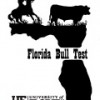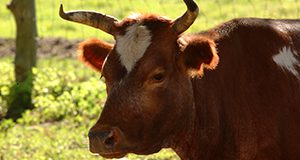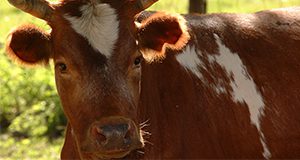The 17th annual Florida Bull Test Sale was held on January 21, 2017 at the conclusion of the 2016-2017 Florida Bull Test. The test evaluated the performance potential and breeding soundness of bulls consigned to the program at the UF/IFAS North Florida Research and Education Center (NFREC). This new 9-page fact sheet discusses test procedures, assessment of feed efficiency, test rules and regulations, health requirements, and test results. Written by Luara B. Canal, G. Cliff Lamb, and Nicolas DiLorenzo, and published by the UF/IFAS Department of Animal Sciences, February 2018.
http://edis.ifas.ufl.edu/an341
Tag: Florida Bull Test
The Florida Bull Test 2015-2016
The 16th annual Florida Bull Test Sale was held on January 16, 2016 at the conclusion of the 2015–2016 Florida Bull Test. The test evaluated the performance potential and breeding soundness of bulls consigned to the program at the UF/IFAS North Florida Research and Education Center (NFREC). This 10-page fact sheet covers the test procedures, assessment of feed efficiency, general policies and procedures, health requirements, test results, and sale summary. Written by Carla D. Sanford, G. Cliff Lamb, and Nicolas DiLorenzo, and published by the UF Department of Animal Sciences, November 2016.
http://edis.ifas.ufl.edu/an328
The Florida Bull Test 2014/2015
The 2014-2015 Florida Bull Test concluded with the evaluation of 103 bulls. The test assessed the performance potential and breeding soundness of bulls consigned to the program at the UF/IFAS North Florida Research and Education Center (NFREC). This 9-page fact sheet covers the test procedures, feed efficiency assessment, test rules and regulations, health requirements, test results, and sale summary. Written by Carla D. Sanford, G. Cliff Lamb, and Nicolas DiLorenzo, and published by the UF Department of Animal Sciences, June 2016.
http://edis.ifas.ufl.edu/an325
Potential Bull Buyers Perceive Increased Value to their Operations When Purchasing Bulls from the Florida Bull Test
 Since its beginning in 2000, the Florida Bull Test has been under constant evolution to achieve its goal of helping producers select high-quality sires, thereby improving production and profitability of beef cattle producers in Florida and the Southeast United States. A survey of potential buyers before the 2014 sale succeeded in identifying which characteristics of bulls are most important to buyers purchasing bulls: purchasing bulls from the Florida Bull Test increases the value of calves sired by improving performance, genetics, and feed efficiency of their herds. This 3-page fact sheet was written by Vitor R. G. Mercadante, Darren D. Henry, Francine M. Ciriaco, Paula M. Mercadante, Tessa Schulmeister, Nicolas DiLorenzo, and G. Cliff Lamb, and published by the UF Department of Animal Sciences, November 2014.
Since its beginning in 2000, the Florida Bull Test has been under constant evolution to achieve its goal of helping producers select high-quality sires, thereby improving production and profitability of beef cattle producers in Florida and the Southeast United States. A survey of potential buyers before the 2014 sale succeeded in identifying which characteristics of bulls are most important to buyers purchasing bulls: purchasing bulls from the Florida Bull Test increases the value of calves sired by improving performance, genetics, and feed efficiency of their herds. This 3-page fact sheet was written by Vitor R. G. Mercadante, Darren D. Henry, Francine M. Ciriaco, Paula M. Mercadante, Tessa Schulmeister, Nicolas DiLorenzo, and G. Cliff Lamb, and published by the UF Department of Animal Sciences, November 2014.
http://edis.ifas.ufl.edu/an313
The Florida Bull Test, 2013-2014
 The 2013-2014 Florida Bull Test was a 112-day performance test and a breeding soundness evaluation of each bull that qualified for the auction. Table 1 summarizes feed efficiency data; Table 2 individual feed intake and feed efficiency; and Table 3 individual animal performance. This 10-page fact sheet was written by Vitor R. G. Mercadante, G. Cliff Lamb, and Nicolas DiLorenzo, and published by the UF Department of Animal Sciences, May 2014.
The 2013-2014 Florida Bull Test was a 112-day performance test and a breeding soundness evaluation of each bull that qualified for the auction. Table 1 summarizes feed efficiency data; Table 2 individual feed intake and feed efficiency; and Table 3 individual animal performance. This 10-page fact sheet was written by Vitor R. G. Mercadante, G. Cliff Lamb, and Nicolas DiLorenzo, and published by the UF Department of Animal Sciences, May 2014.
http://edis.ifas.ufl.edu/an301
The Florida Bull Test 2012-2013
 The North Florida Research and Education Center in Marianna, Florida annually hosts the Florida Bull Test. By controlling the environmental factors and taking Expected Progeny Differences (EPD’s) into account, the data clearly emphasizes the dual importance of genetics and environment in all cattle types. This 9-page fact sheet presents the procedures, rules, and results of the 2012-2013 test. Written by G. Cliff Lamb and Nicolas DiLorenzo, and published by the UF Department of Animal Sciences, October 2013.
The North Florida Research and Education Center in Marianna, Florida annually hosts the Florida Bull Test. By controlling the environmental factors and taking Expected Progeny Differences (EPD’s) into account, the data clearly emphasizes the dual importance of genetics and environment in all cattle types. This 9-page fact sheet presents the procedures, rules, and results of the 2012-2013 test. Written by G. Cliff Lamb and Nicolas DiLorenzo, and published by the UF Department of Animal Sciences, October 2013.
http://edis.ifas.ufl.edu/an290
The Florida Bull Test 2011-2012 (AN284)
 The North Florida Research and Education Center in Marianna, Florida annually hosts the Florida Bull Test. By controlling the environmental factors and taking Expected Progeny Differences (EPD’s) into account, the data clearly emphasizes the dual importance of genetics and environment in all cattle types. This 5-page fact sheet presents the procedures, rules, and results of the 2011-2012 test. Written by G. Cliff Lamb and Nicolas DiLorenzo, and published by the UF Department of Animal Sciences, December 2012.
The North Florida Research and Education Center in Marianna, Florida annually hosts the Florida Bull Test. By controlling the environmental factors and taking Expected Progeny Differences (EPD’s) into account, the data clearly emphasizes the dual importance of genetics and environment in all cattle types. This 5-page fact sheet presents the procedures, rules, and results of the 2011-2012 test. Written by G. Cliff Lamb and Nicolas DiLorenzo, and published by the UF Department of Animal Sciences, December 2012.
http://edis.ifas.ufl.edu/an284

